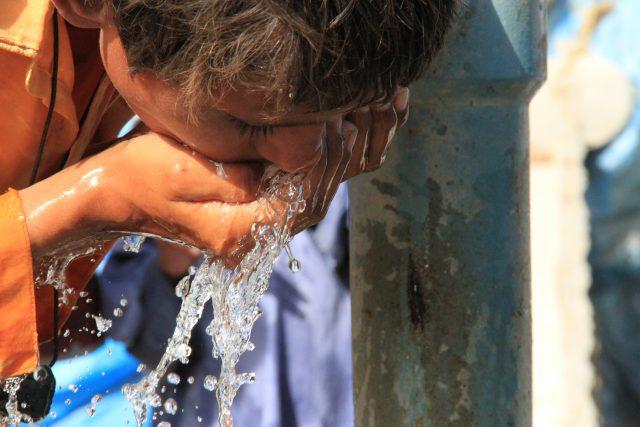
The beat
No charges for officers in Alton Sterling slaying
The Louisiana Attorney General has announced that two white police officers who shot and killed a black man in 2016 will not face criminal charges. Police shot and killed Alton Sterling as he reached for a loaded weapon following a struggle. Footage of the July 2016 incident sparked protests and fueled the Black Lives Matter movement.
‘Deficiencies’ found in Victoria Police
An audit by the Independent Broad-based Anti-Corruption Commission (IBAC) in Victoria has found what it calls ‘concerning deficiencies’ in the way Victoria Police handles investigations when a civilian dies or is seriously injured following contact with police. The audit revealed that police failed to notify IBAC of ‘16 deaths and nine serious injuries resulting from police contact’. The audit also found clear conflicts of interest and an over-reliance on police statements rather than on those of independent witnesses during investigations following police use of force. The audit into the Victorian police force comes as Queensland police are under increased scrutiny over complaints against several officers of using excessive force.
Drop in taser use
West Yorkshire Police have tasered fewer people since the introduction of body cameras. There were 57 tasering incidents recorded in 2017, a 27% decrease from the previous year. Assistant Chief Constable Andy Battle says that recording police interactions has resulted in suspects being ‘less likely to be violent’. While West Yorkshire Police taser use has dropped, statistics show that London Metropolitan Police used force—including handcuffs, batons, CS spray, and guns—a total of 12,600 times in three months. Black people, who make up just 13% of London’s population, accounted for 36% of the reported incidents of use of force by police.
CT Scan
IS targets Shiites in Afghanistan
Islamic State (IS) claimed responsibility for an attack near a Shiite mosque in Herat, Afghanistan, on 25 March. Two attackers attempted to enter the mosque but were turned away by guards. One of the attackers then detonated his explosives. An earlier IS attack in Kabul on 21 March against Shiites celebrating Nowruz, the Persian new year, killed 33, and another, also in Kabul, on 9 March against a Shiite sect commemorating the death of a community leader killed 10 people. Sectarianism is a cornerstone of IS ideology, and both the Taliban and the Khorasan branch of IS have targeted Shiites, occasionally teaming up. Afghanistan has historically been plagued by ethnic rather than sectarian fighting, but this has changed recently with the influx of fighters fleeing Syria and Iraq.
Teaming up to counter terror
Jordan opened its second US-funded counterterrorism centre, the Jordan Gendarmerie Training Academy. Partner nations will use the centre for operational readiness and terrorist response training, including crisis management, bomb counter-measures and post-blast investigations. The US plans to build additional centres in Senegal and Kenya.
Checkpoint
Cameroon–Nigeria border violence
The conflict in the Cameroon–Nigeria border region has completely halted trade between the two states. English-speaking separatists in Cameroon are fighting to establish the ‘Republic of Ambazonia’. Buses no longer use the Bamenda–Enugu road corridor, a US$423 million project funded by the African Development Bank. The violence has caused more than 20,000 refugees to cross from Cameroon into eastern Nigeria. The separatists pose the largest challenge yet to Cameroonian President Paul Biya, who recently held a cabinet meeting for the first time in two years.
Tear gas heralds Kosovo’s new borders
Opposition leaders in Kosovo launched tear gas in parliament to protest the country’s new border agreement with Montenegro. The Vetvendosje Party believes the new border surrenders more than 80 square kilometres to Montenegro. Ratifying the agreement was a key condition for the EU to extend visa-free travel to Kosovo. The EU’s High Representative for Foreign Policy, Frederica Mogherini, welcomed the move.
Oil in Ogaden risks violence
Recently discovered gas reserves along the disputed border region between Somalia and Ethiopia could spark increased violence. The highly valued gas reserves increase Ethiopia’s gas deposits from 4.5 trillion cubic feet to as much as 8 trillion cubic feet. But Ethiopia’s eastern Ogaden region and its largely ethnic-Somali population is stricken by an armed conflict waged by the Ogaden National Liberation Front. The Ethiopian government has launched a broad range of ‘post-conflict’ infrastructure projects and insists that the fighting is over, but low-level violence continues.
First responder
Water shortages continue to threaten Pakistan
A report from Al Jazeera outlines the difficulties Pakistan continues to face as a consequence of its water shortage, bought about by ‘poor planning and uncontrolled urbanisation’. Major concerns include a high reliance on agriculture for exports, increasing population and increasing industrialisation, which leads to contamination of existing water supplies. The Pakistan government is expected to release a water policy later this year.
It’s a risky business
The UN Office for Disaster Risk Reduction released an implementation guide on local disaster risk reduction and resilience strategies. It outlines the importance of mainstreaming disaster risk management within local development strategies. The report argues that risk profiles change over time and that local actors, including local governments and community organisations, are often the actors who do the most to mitigate risk.
Where does the money go?
In order to respond to a crisis, it’s important to know where resources and efforts are already being directed. The International Aid Transparency Initiative collects data on development and humanitarian aid activities around the world, and is a brilliant resource for practitioners in the risk and resilience field. Between 2017 and 2018, there were over 220,000 projects in 356 countries. According to the data, the majority of development and aid funding comes from the World Bank (20%), followed equally by USAID and the UK (11%). In 2017, emergency response and transport and storage were the sectors that received the highest levels of funding, while so far in 2018, the health sector has accounted for the highest spending.